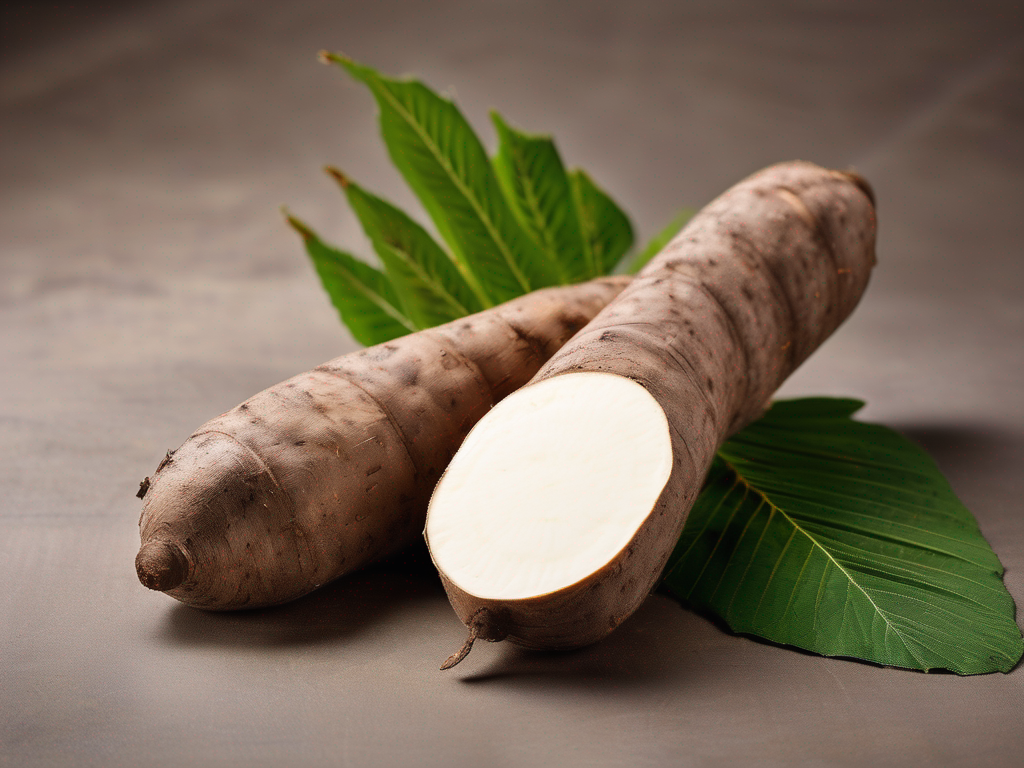
How to Properly Store Cassava to Extend Its Shelf Life
Get Your Free Food Safety Cheat Sheet
30 most common foods with instant answers. Print it and stick it on your fridge—completely free!
How to Properly Store Cassava to Extend Its Shelf Life
Cassava, also known as yuca or manioc, is a starchy root vegetable that is a staple in many cuisines around the world. It is a versatile ingredient that can be used in both savory and sweet dishes. Proper storage of cassava is crucial to maintain its freshness and extend its shelf life. In this blog post, we will discuss how to properly store cassava to ensure it stays fresh and flavorful for longer. (Cassava)
Understanding Cassava Storage
Before diving into the specifics of how to store cassava, it's important to understand the factors that affect its shelf life:
- Temperature: Cassava should be stored in a cool, dry place to prevent sprouting and spoilage.
- Humidity: Excess moisture can cause cassava to rot quickly, so it's essential to store it in a dry environment.
- Light: Exposure to light can cause cassava to develop a bitter taste, so it should be stored in a dark place.
- Air Circulation: Proper ventilation is crucial to prevent the buildup of moisture, which can lead to mold growth.
Steps to Properly Store Cassava
Follow these steps to ensure your cassava stays fresh and tasty for longer:
1. Choose High-Quality Cassava
Start with fresh, firm cassava roots that are free from blemishes, soft spots, or mold. Selecting high-quality cassava is the first step in ensuring a longer shelf life.
2. Store Cassava in a Cool, Dark Place
- Temperature: Store cassava in a cool, dark place with a temperature range of 50-60°F (10-15°C).
- Avoid Refrigeration: Cassava should not be stored in the refrigerator, as the cold temperature can cause it to deteriorate quickly.
- Use a Ventilated Storage Area: Ensure proper air circulation to prevent moisture buildup.
3. Properly Wrap Cassava for Storage
- Wrap in Paper Towels: Wrap each cassava root individually in paper towels to absorb excess moisture and prevent mold growth.
- Avoid Plastic Bags: Do not store cassava in plastic bags, as they can trap moisture and promote rotting.
4. Check Cassava Regularly
- Inspect for Spoilage: Check the cassava roots regularly for any signs of spoilage, such as mold, soft spots, or sprouting.
- Remove Spoiled Portions: If you notice any spoiled areas, cut them off immediately to prevent further contamination.
5. Use Cassava Promptly
While cassava can be stored for several weeks when properly stored, it is best to use it as soon as possible for the freshest flavor and texture.
Conclusion
Proper storage is essential to extend the shelf life of cassava and ensure its quality and safety for consumption. By following the guidelines outlined in this blog post, you can enjoy fresh and flavorful cassava for longer periods. Remember to choose high-quality cassava, store it in a cool, dark place with proper ventilation, wrap it in paper towels, check for spoilage regularly, and use it promptly. By incorporating these simple practices into your routine, you can make the most of this versatile root vegetable. Learn more about cassava here. (Cassava)
Related Posts
Here are some other articles you might find helpful:
- How to Prevent Mold Growth on Cassava Flour: Tips and Tricks
- Is it Safe to Use Expired Cassava Flour in Baking Recipes?
- The Ultimate Guide to Storing Cassava Flour for Maximum Shelf Life
- Is it Safe to Eat Cassava After the Expiration Date?
- Preserving Cassava Freshness: Quick Tips for Long-lasting Storage
Authoritative Food Safety References
These agencies and university labs inform every tip and health precaution we publish.
USDA FoodKeeper – Cold Storage Guidelines
Official refrigerator, freezer, and pantry timelines maintained by the U.S. Department of Agriculture.
Visit USDA FoodKeeperFDA Produce Safety Rule & Grower Guidance
Field-to-fridge handling practices that prevent contamination of fruits, vegetables, and leafy greens.
Visit FDA Produce SafetyCDC Foodborne Illness Prevention Hub
Surveillance-backed guidance on pathogens, symptoms, and steps to reduce foodborne illness risk.
Visit CDC Food SafetyUC Davis Postharvest Technology Center
University research detailing optimal storage atmospheres for produce after harvest.
Visit UC Davis PostharvestPenn State Extension – Home Food Preservation & Safety
Peer-reviewed extension bulletins on safe canning, chilling, and reheating practices.
Visit Penn State ExtensionGet Your Free Food Safety Cheat Sheet
30 most common foods with instant answers. Print it and stick it on your fridge—completely free! Want more? Upgrade to the complete guide with 70+ foods.
Scan your food directly and get instant safety info using our AI-powered camera feature.